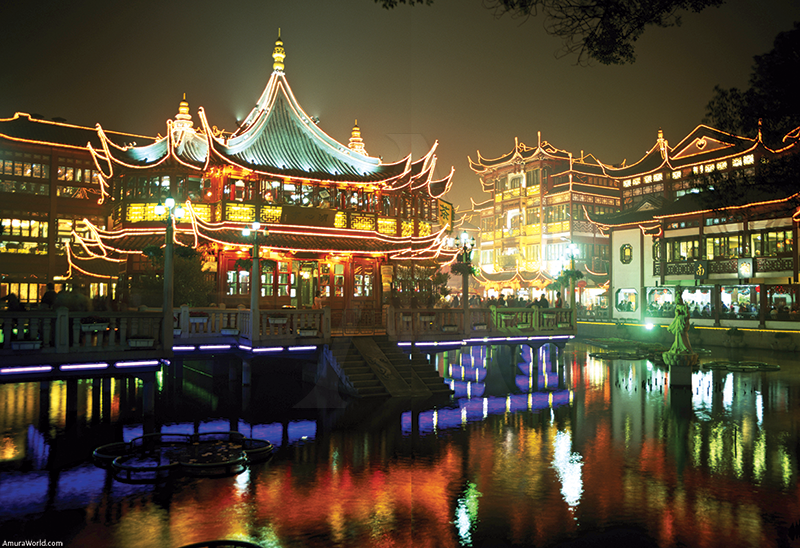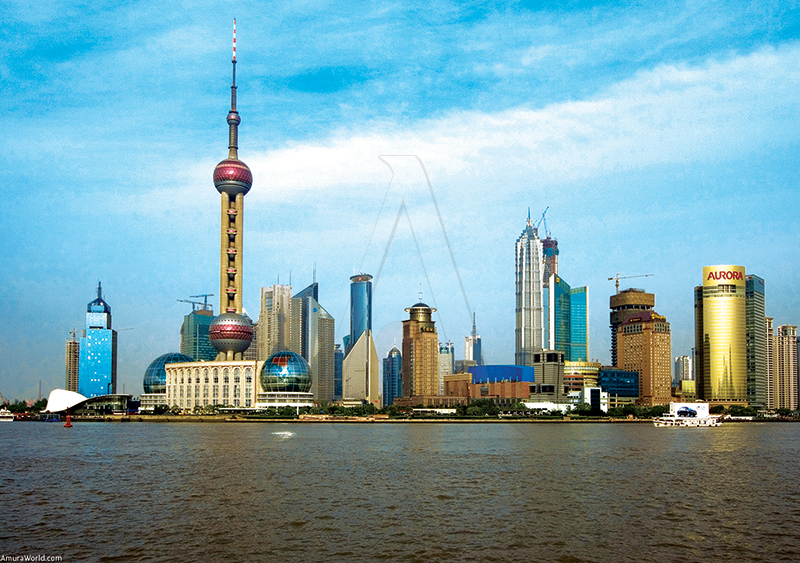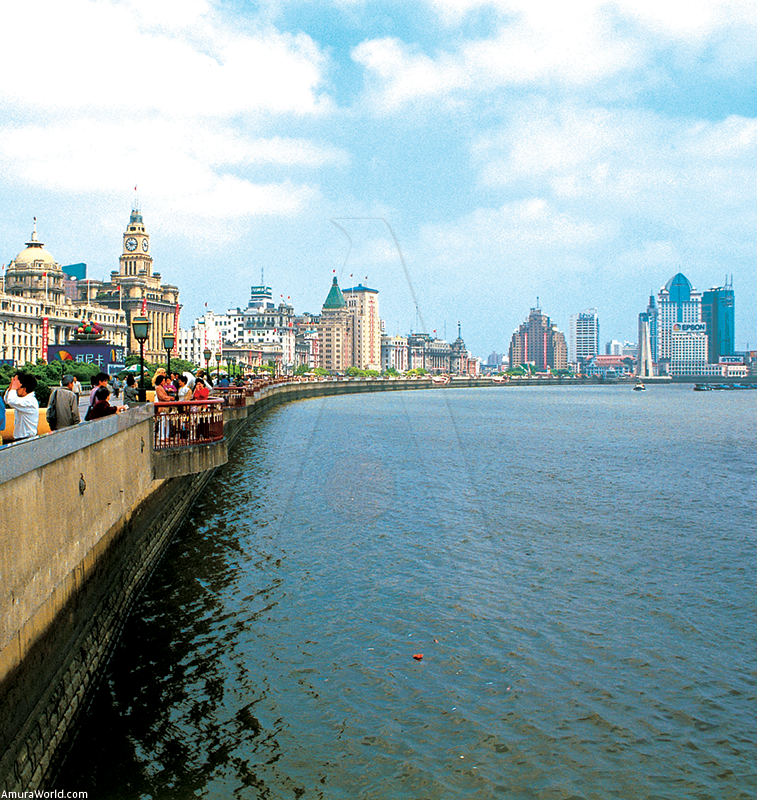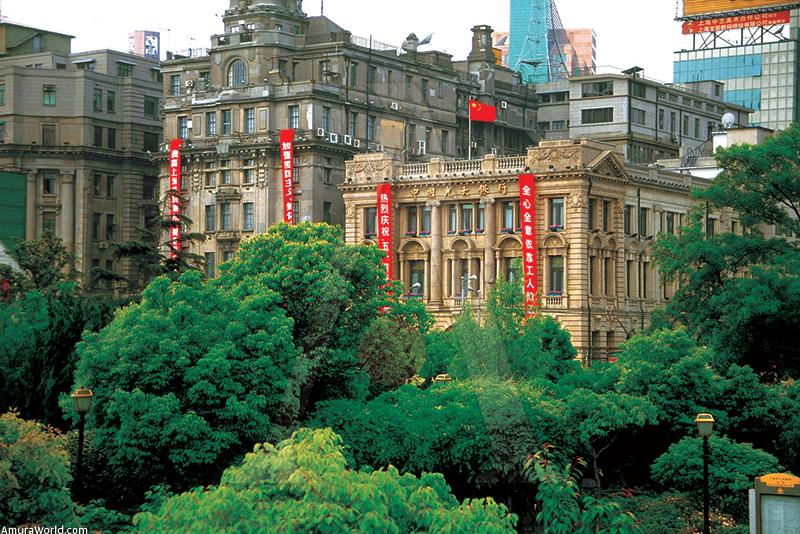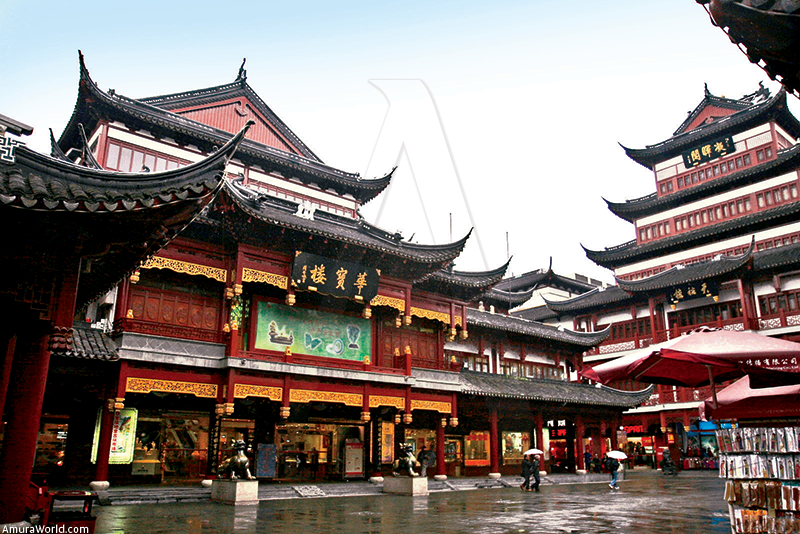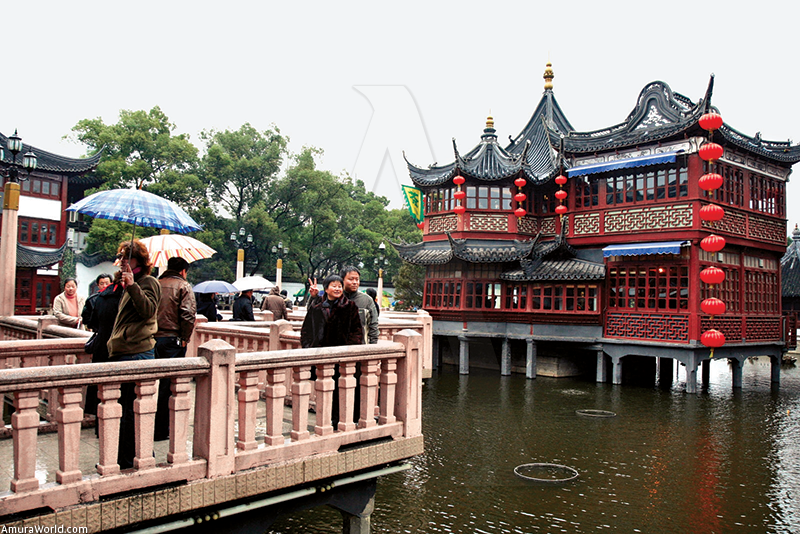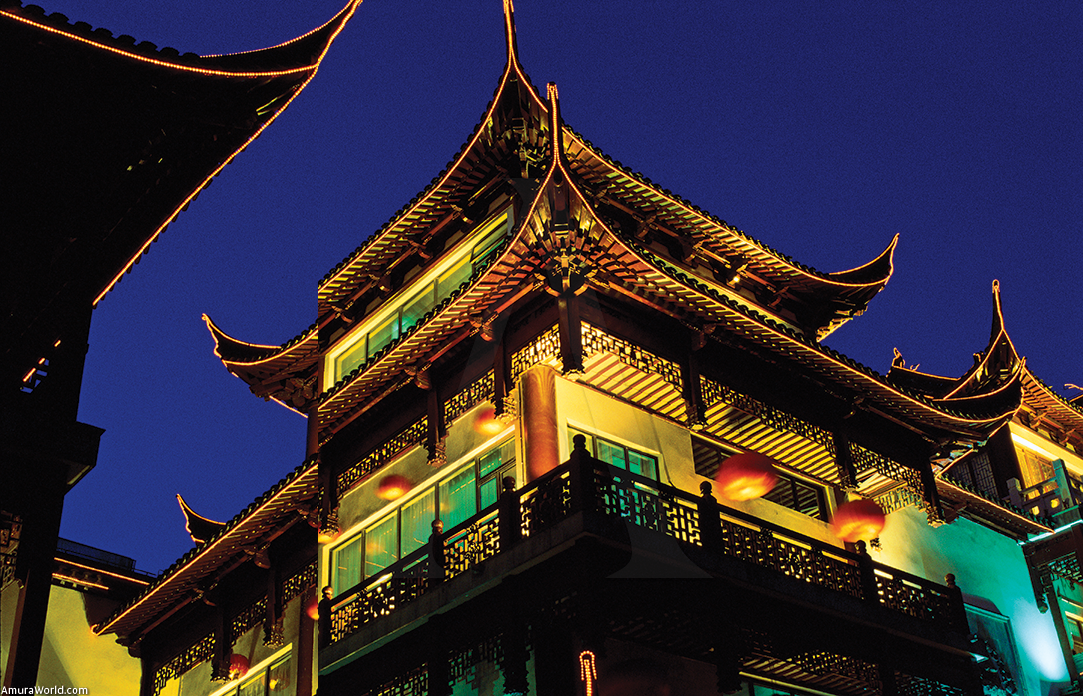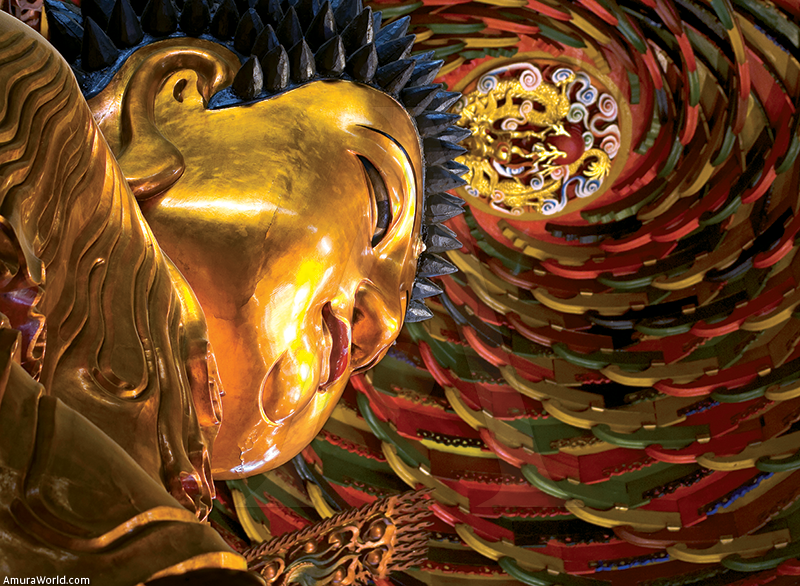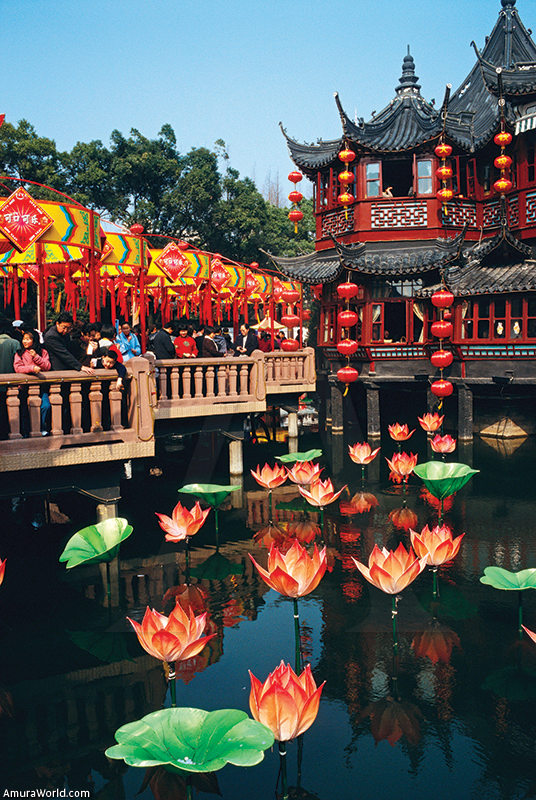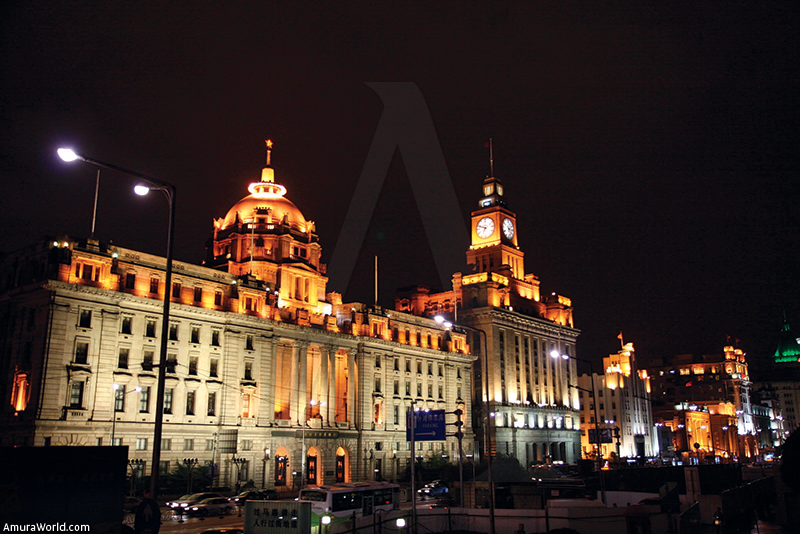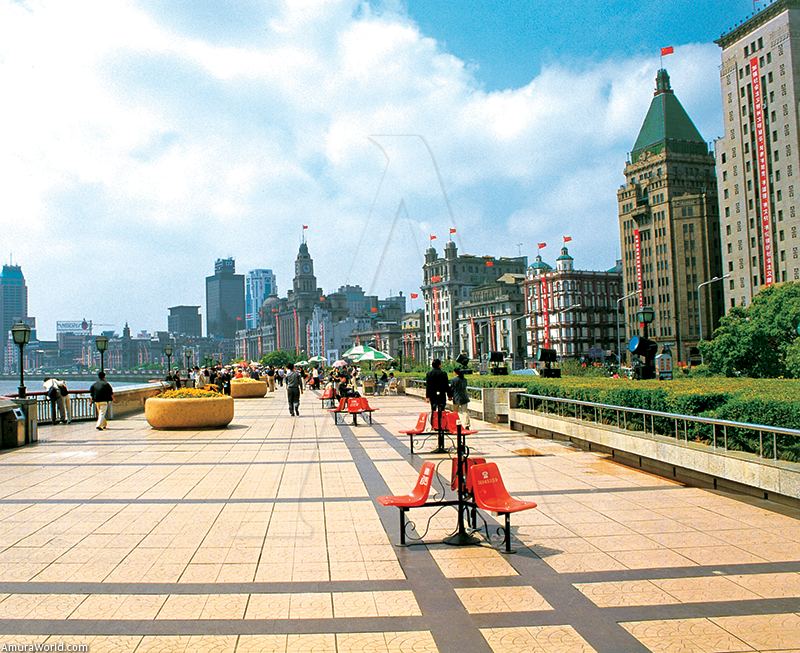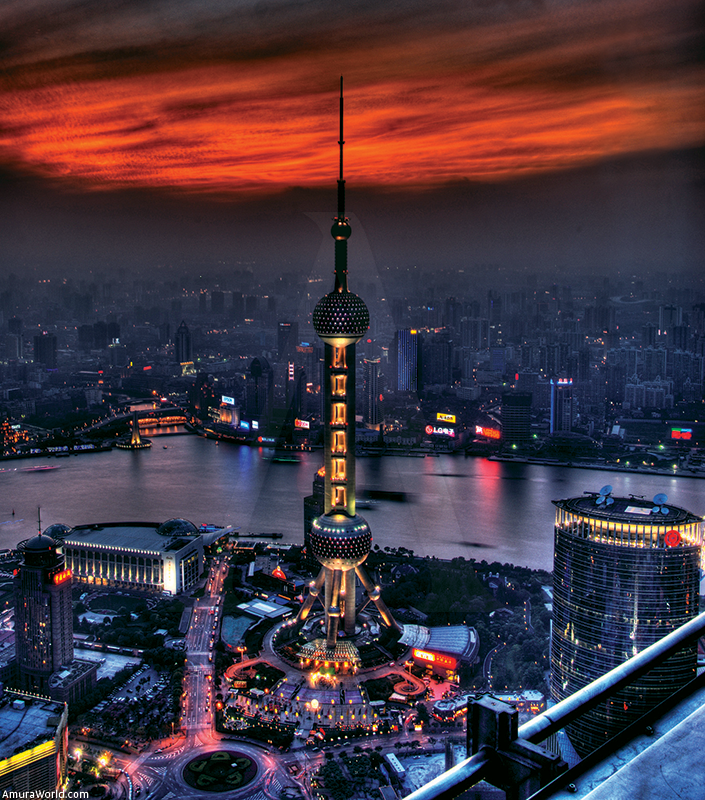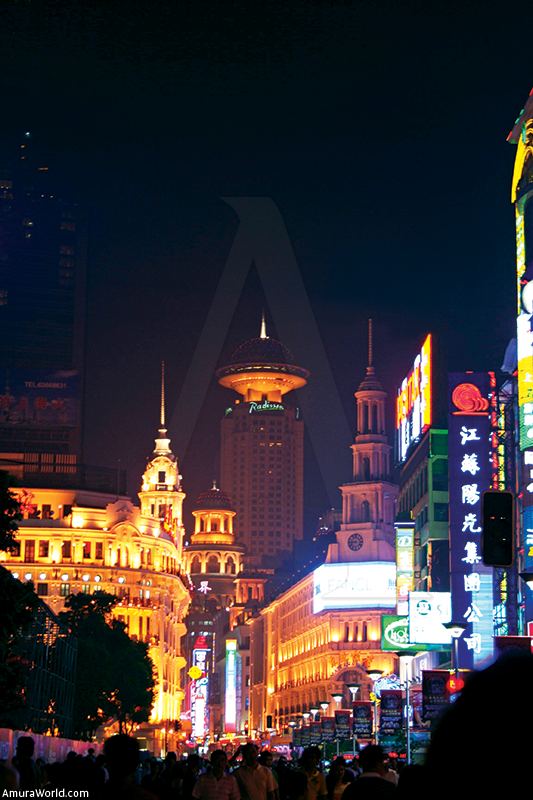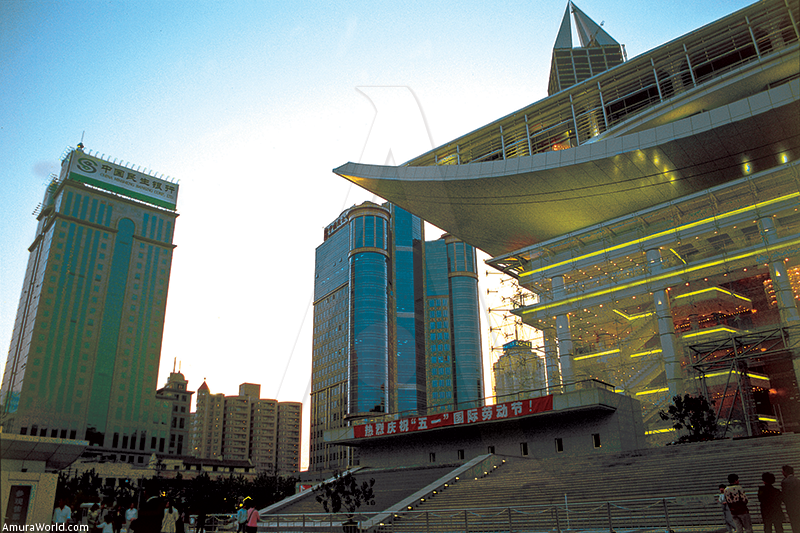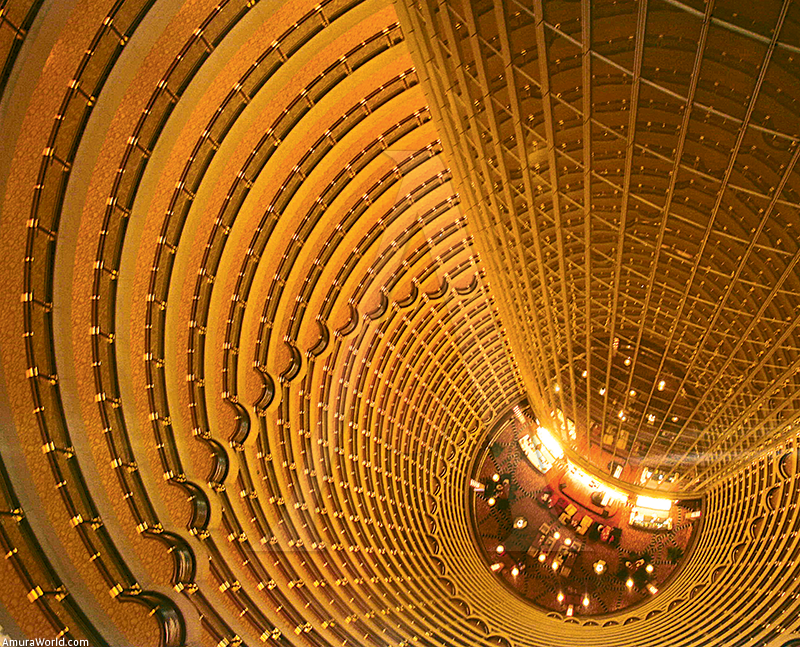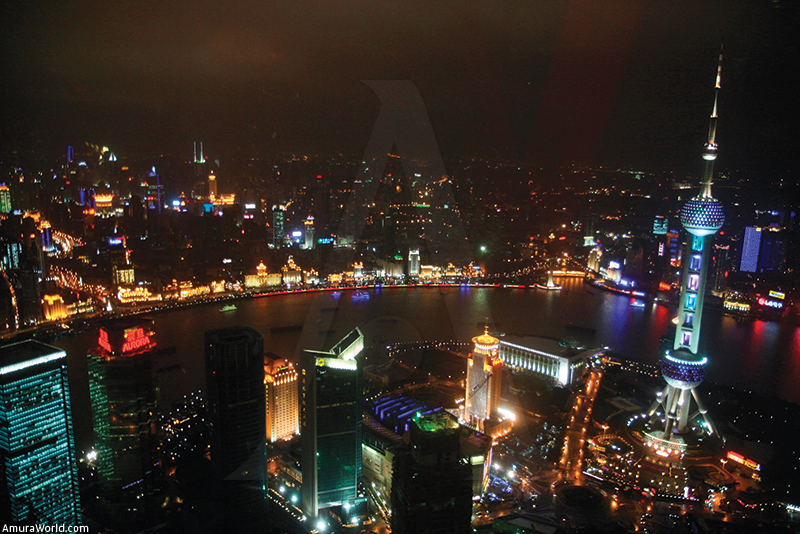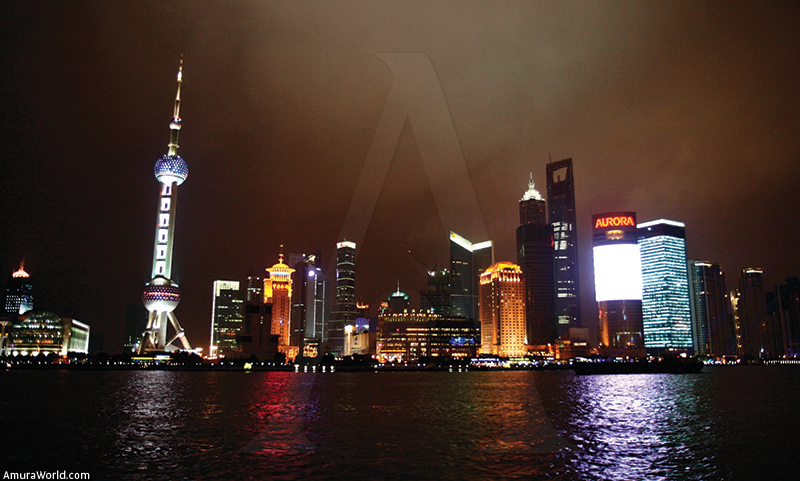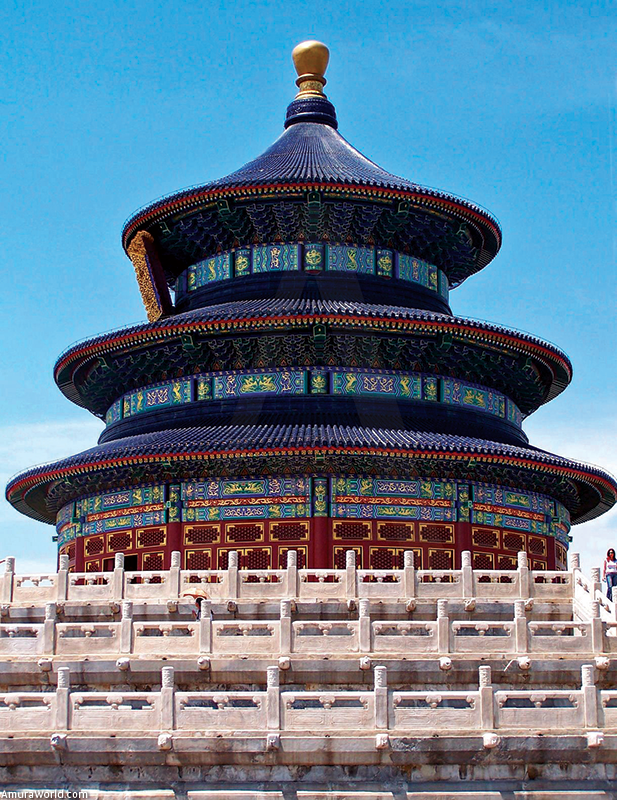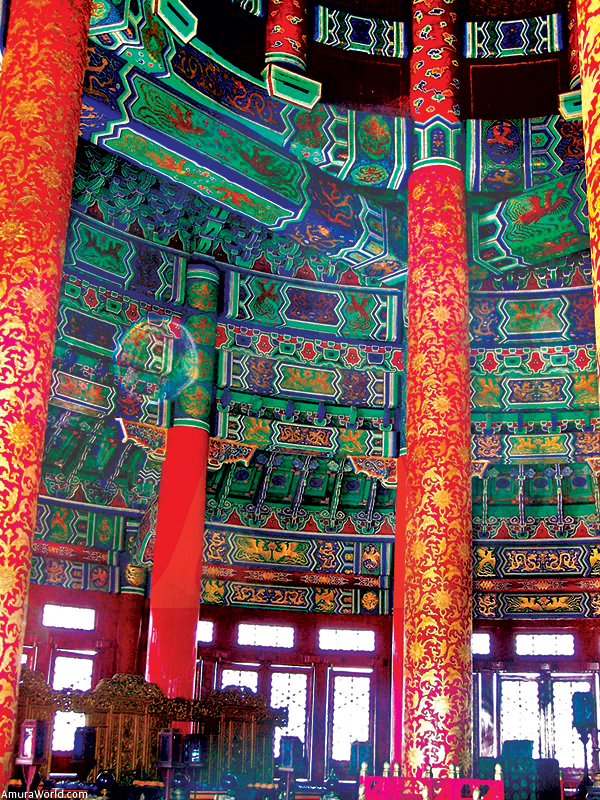Situated at a strategic natural point, Shanghai is one of the most emblematic cities in China. With 14 million inhabitants, it is the most populated city in the country and is the country's economic financial and industrial center. The city has a unique combination of history.Tradition and modernity that overcomes the imagination because it has been the passing place for many cultures, partly due to its strategic posi- tion on being the natural exit to the sea from the rich provinces of Jiangsu and Zhejiang.
Historically. Shanghai was the strategic port for the merchant ships that transported all types of goods, providing a stopoff point on the route towards Beijing and Tokyo.
Nowadays. Shanghai continues to be a meeting point between cultures with a cosmopolitan population and a blend of modern and traditional: the world of many worlds.
History
From its beginnings. Shanghai has always been marked by foreign influence. It was apeaceful fishing port until 1842 when the English established a concession in die port after winning the first Opium war. This historical event sparked the evolution of Shanghai and determined its cosmopolitan character, which remains visible to this day.
The English governed its territory in Shanghai independently and a short time afterwards, the French, the Americans and Japanese also established their own territories in the city.
By 1930. Shanghai had become the most important port in Asia, serving as a base for the largest shipping companies in the world. During this time, large banks and multinational companies established offices in the Bund district, along the waterfront, in decidedly English style buildings.
The lucrative trade activity to Europe and the rest of the world produced enough wealth so that the city could rival many European cities in terms of architecture. However, this affluence lived side by side with the emergence of opium rooms, brothels and a free lifestyle. Soon Shanghai became a very attractive port for those in search of an exotic lifestyle and escape.
The Japanese bombed Shanghai in 1937 causing the large-scale evacuation of foreigners.
Shanghai remained under Japanese control from that year until 194S. During the war, the foreign concessions officially left Shanghai and the territory was returned to the govern- ment of Kuomintang. Many of the English chose to settle in Hong Kong, which was then known as “Little Shanghai”, marking the begin- ning of the island’s occupation which only ended in recent years.
By 1949, most foreigners had left Shanghai and the Communist era had begun. During these years, the Communist régime main- tained strong control over the city, the citizens and economic activities, which caused an eco- nomic crisis in the city that led to many work- ers leaving.
Following the economic crisis, there was a resurgence of commercial activities driven by the liberal policies of Deng Xiaopeng from 1976.
However, it was not until the beginning of the 1990s that Shanghai’s dizzy transformation into a modern city really began. In recent years the population of Shanghai has recovered its cosmopolitan character that marked it from its beginnings and nowadays, the city is one of the most important economic centers in the world.
Culture
Due to its exposure to Western influence and its incomparable economic development, Shanghai is the expression of modern development of Chinese culture. Lu Xun stimulated the development of modern Chinese literature during his stay in Shanghai and the city's writers followed his lead. Engravings and graphic arts of this time were the cultural starting points for future artistic styles and trends. Cinema in Shanghai was also an important catalyst for Chinese cultural evolution.
This entire process ended with the World War and from then the Communist government has exercised control over all cultural manifestations. However, the city currently has good artistic companies such as the Shanghai Ballet Company, the Shanghai Symphony Orchestra, the Shanghai Philharmonic Orchestra and the Shanghai Municipal Performance Company, which are the standard bearers of official culture. General opinion is that Beijing is home to intellectuals and artists, whereas Shanghai has the creators, although the importance of this division is decreasing due to the current importance of the vibrant cultural scene of Shanghai.
Main places of interest
■ Jade Buddha Temple
This is the most famous temple in Shanghai. Given the scarcity of temples in the city, visitors can often witness religious ceremonies from the most simple and daily ceremonies to honor the deceased, held daily by relatives, to the most complex ceremonies held in accordance with the Buddhist calendar.
The temple was built at the beginning of the 20th century to house two white jade Buddha statues, which were brought from Burma by the monk Hui Gen. These statues are its main attraction. The style of the temple is classic, with four celestial guardians at the entrance with the most impor- tant room to the area with the jade Buddha on the second floor. The other jade Buda. in a reclining position, is housed in one of the rooms on the west side of the temple. Visitors can take photographs of everything, including the monks praying and chanting, but not of the two Buddhas themselves.
■ Yuyuan Garden
Located in the center of old Shanghai, the ancient city surrounded by a wall, the garden was built in the 16th century by Pan Yunduan. a rich official, and has had a varied history.
The Pan family fell into ruin and the garden was abandoned. In 1760. the garden was restored by a group of merchants only to be occupied by the English a short time later. It was used as a bazaar during the first half of the 20th century before being newly restored in 19S7.
The fundamental elements of Chinese gardening are concentrated in only two hectares to create the retreat that opens a hundred landscapes and a thousand scenes up to the visitor. Zig-zagging paths, small walls, specially shaped bridges create a scene that changes with every footstep.
The Yuyuan Garden is a private garden that has best managed to combined the vegetation with pavilions, stones and ponds. On sunny days, it stones, pavilions and waters take on a spectacu- lar color.
■ El Malecón o Bund
The Waterfront or Bund The area established by the English following the Opium War is known as the Waterfront Since the Chinese lived in the old. walled city, the English used this area for their commercial activities on a riverside stretch to the north of the city.
As it continued to develop a commercial and industrial role in Shanghai, the Waterfront gained importance and during the first half of the 20th century, the most emblematic buildings of the city were built there.
The Bund became a city closed off to the Chinese. There was a sign that said *No dogs and Chinese are allowed' on the gate of Huangpu Park. To build of the beautiful Bank of China Building on that street, the builders had to accept the build- ing regulations imposed by the British adminis- tration. which stated that no Chinese building could be higher than the English buildings.
The most interesting buildings are the Hong Kong and Shanghai Bank, which when built, it was said that it was the best building to the east of the Suez Canal, the Dongfeng Hotel, formerly known as the Shanghai Club, and the Peace Hotel, formerly the Cathay Hotel, which extends to the two corners of Nanjing Street and the Waterfront. The South Building, built in 1906. is the oldest building in this street, while the North building with its green pyramid-shaped roof is the tallest.
■ Pudong Area
At the beginning of the 1990s. when Shanghai was ready to launch a full thrust toward mod- ernization. the authorities confirmed that the scarcity of the land may be a hindrance to its development. From there emerged the project to create a new city to the east of River Huangpu. where there were just a few peasants' houses and workers’ housing blocks.
The city is the district of Pudong. which means 'east of the river', which in only a decade has completely changed the panorama of Shanghai. Built based on modern and well thought-out urban planning, the development of which can be seen in the City Exhibition Museum, this area combines commercial, residential and recre- ation buildings in an orderly fashion.
■ Main Buildings
The Oriental Pearl Television Tower, at 470 meters high, is the highest building in Asia and the third-highest in the world. It has a visual design that besides granting it its magnificence, also bestows a high ascetic level upon it. Supported by three enormous columns, it has a large dome that houses viewing galleries and restaurants.
The Jinmao Building is the highest in China and the third-highest in the world, with 88 floors and its upper part in the shape of a pagoda; it combines dassic Chinese style with the atomic age. The Hyatt Hotel occupies the 55th floor upwards and has a very careful and spectacular design.
The Nanpu Bridge, completed in 1989, was the first bridge built in Shanghai to connect the two banks of the Huangpu River. It is the fourth- longest bridge of its type in the world. The columns that support the cables have an original and attractive "H* shape with the name of the bridge written on them in Deng Xiaoping calligraphy. Access to the bridge from the city side is by a gigantic spiral, another symbol of the Shanghai of tomorrow.
■ People's Square
The square was a racecourse during the colonial period, which was substituted by a dirty bus sta- tion during the Communist years.
The Shanghai Museum, to the south of the square, in the shape of an ancient, bronze, tripod cooking vessel is the best museum in Quna. Its 10.000 m? of exhibition space includes the most important examples of Chinese art divided into 11 categories: bronze, ceramics, painting, calligraphy, sculpture, furniture, jade, seals, coins, art of the minorities.
Zande Lou ceramics, as well as several temporary exhibition halls. Its collections of bronze, ceramics and paintings are the most outstanding.
The Great Theater, completed in 1998 with 1800 seats is opposite the Museum. It has the largest stage in Asia, with 718 m? and is an architectur- al masterpiece. The City Exhibition Museum is located to the east of the theater, which is very interesting for anybody who wishes to learn about Shanghai in the past and the future.
■ French Concession Area
The area occupied by the French from 1849 after the English had settled and before the arrival of the Japanese, is located in the Xuhui. Luwan and Nanshi districts. A large part of the old buildings have been lost, but the 'French' ambience remains alive in many places. A great many original buildings have been restored and are now used as luxury commercial areas and residences for the foreigners who live here.
■ The House of Tea in the Middle of the Lake Founded in 1784 to the rear of the Temple of the Gods of the City and the Old Shanghai Market, this beautiful house of tea is located in the mid- dle of a lake. Access is by these exact bridge designed in accordance with the Feng Shui beliefs to disorientate evil spirits that prevent one from drinking tea.
■ Gastronomy
Shanghai's gastronomy, also known as Hu cai, is famous throughout China. The predominant ingredients are fish, seafood and chicken, served in different liqueurs Haute cuisine is very abun- dant in Shanghai on it being a cosmopolitan city.
■ Visas and documents
Mexican citizens bearing ordinary passports require a visa to enter the People's Republic of China. Visas can be processed at the Chinese Embassy and are granted for a maximum stay of 90 days.
The Temple of Heaven
he building complex known as the “Temple of Heaven” is one of the historic and architectural wonders of the Far East and is the largest of its type in the People’s Republic of China. It was built in 1420 in the Tiantan Gongyuan Park, to the south of Beijing.
The Temple of Heaven consists of three buildings: the Circular Altar or the Altar of Heaven, the Imperial Vault of Heaven and the Hall of Prayer for Good Harvests, and has become one of China’s main attractions.
The Hall of Prayer for Good Harvests is the most well known buildings and is among the most representative in Beijing. It is circular, built on three white marble terraces supported by 28 wooden columns and brick walls and does not have any beams.
The Circular Altar or the Altar of Heaven (built in 1530) is an open construction linked to the Hall of Prayer for Good Harvests along stone and brick walkway. Consists of three concentric terraces bordered with white marble balustrades.
The Imperial Vault of Heaven is surrounded by the Echo Wall, a 60-meter circular construction.
The Temple of Heaven, also known as “Tiantan”, was registered on the UNESCO World Heritage List in 1998, and its extraordinary and imposing architecture invites visitors to learn about ancient traditions.
Info
Margarita Liceaga
Servicios Especiales de Leisure
BCD Travel
Tel: (55) 9138 3023
conmutador: (55) 9138 3000
This email address is being protected from spambots. You need JavaScript enabled to view it.
This email address is being protected from spambots. You need JavaScript enabled to view it.
http://www.beijingchinaworld.com/
Text: Kundalini Muñoz ± Photo: Cortesía de las marcas

